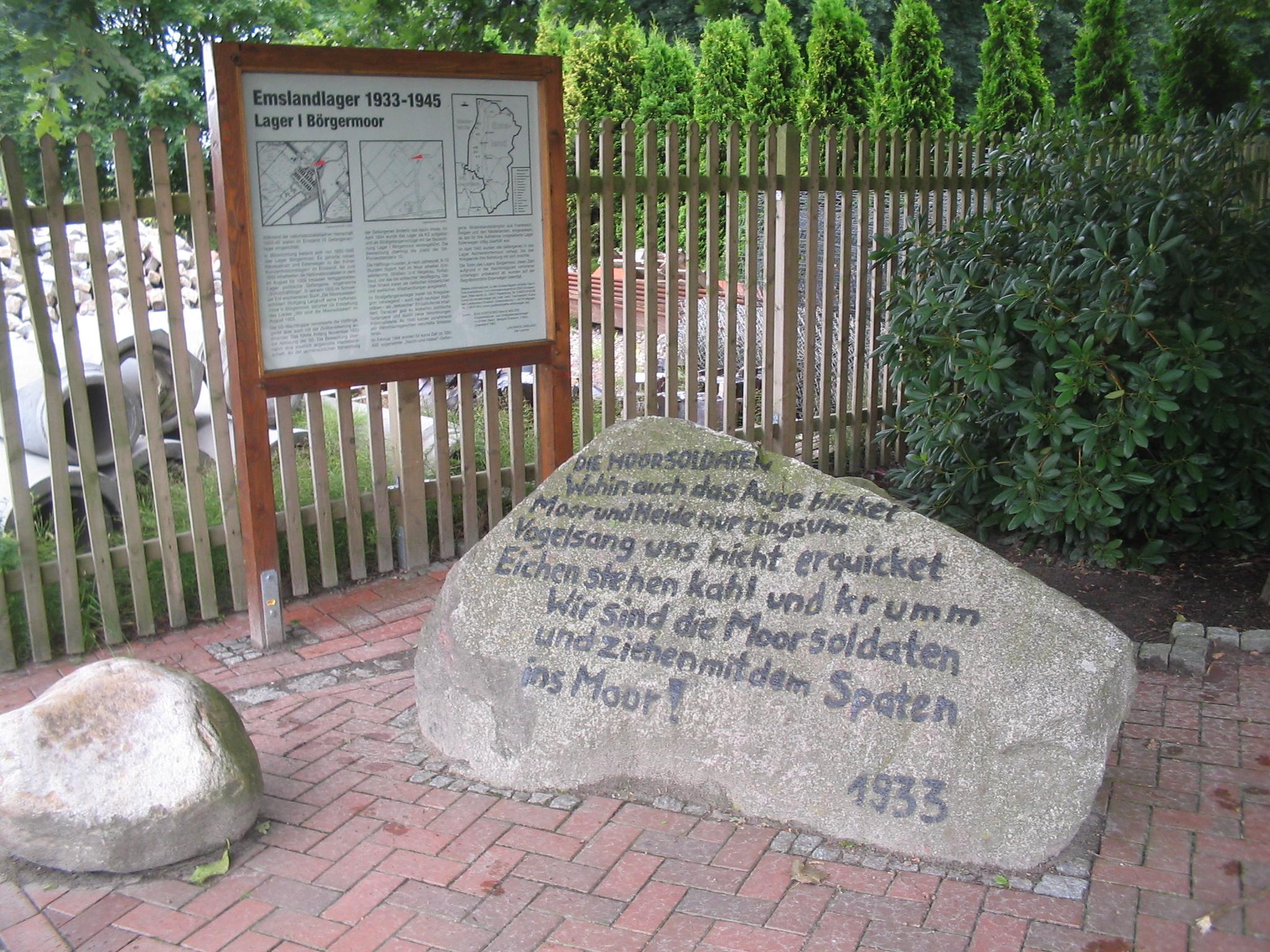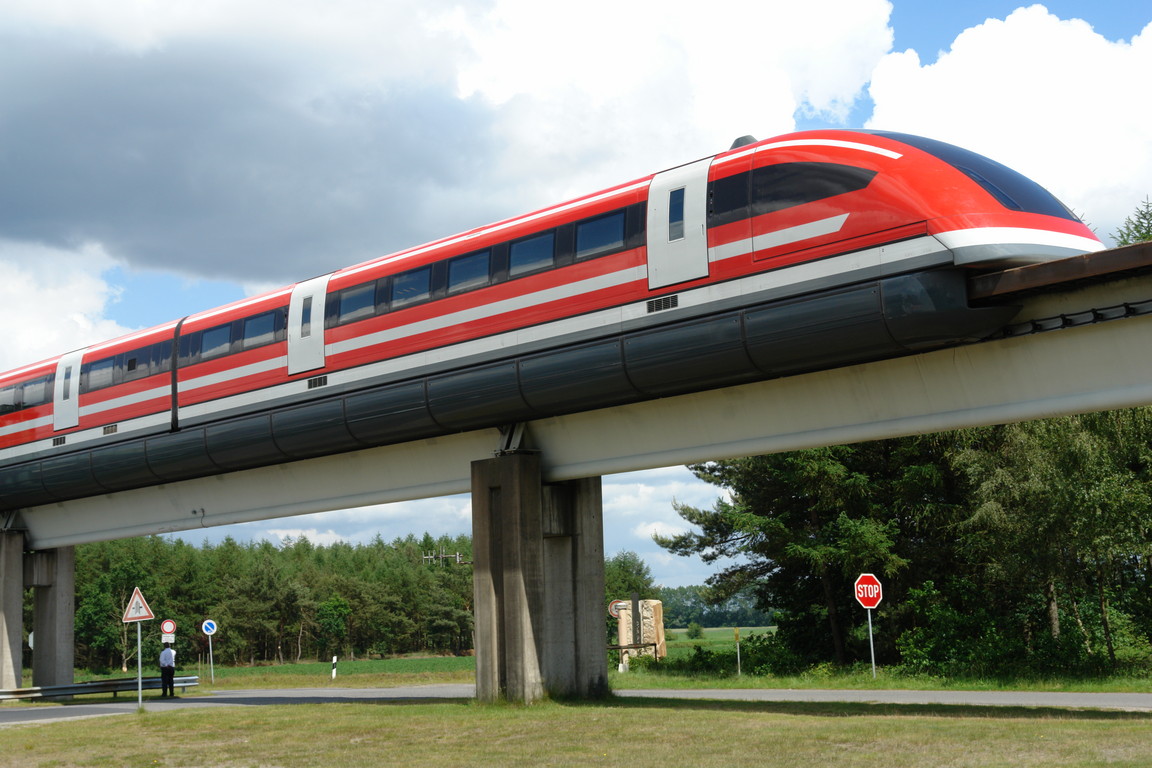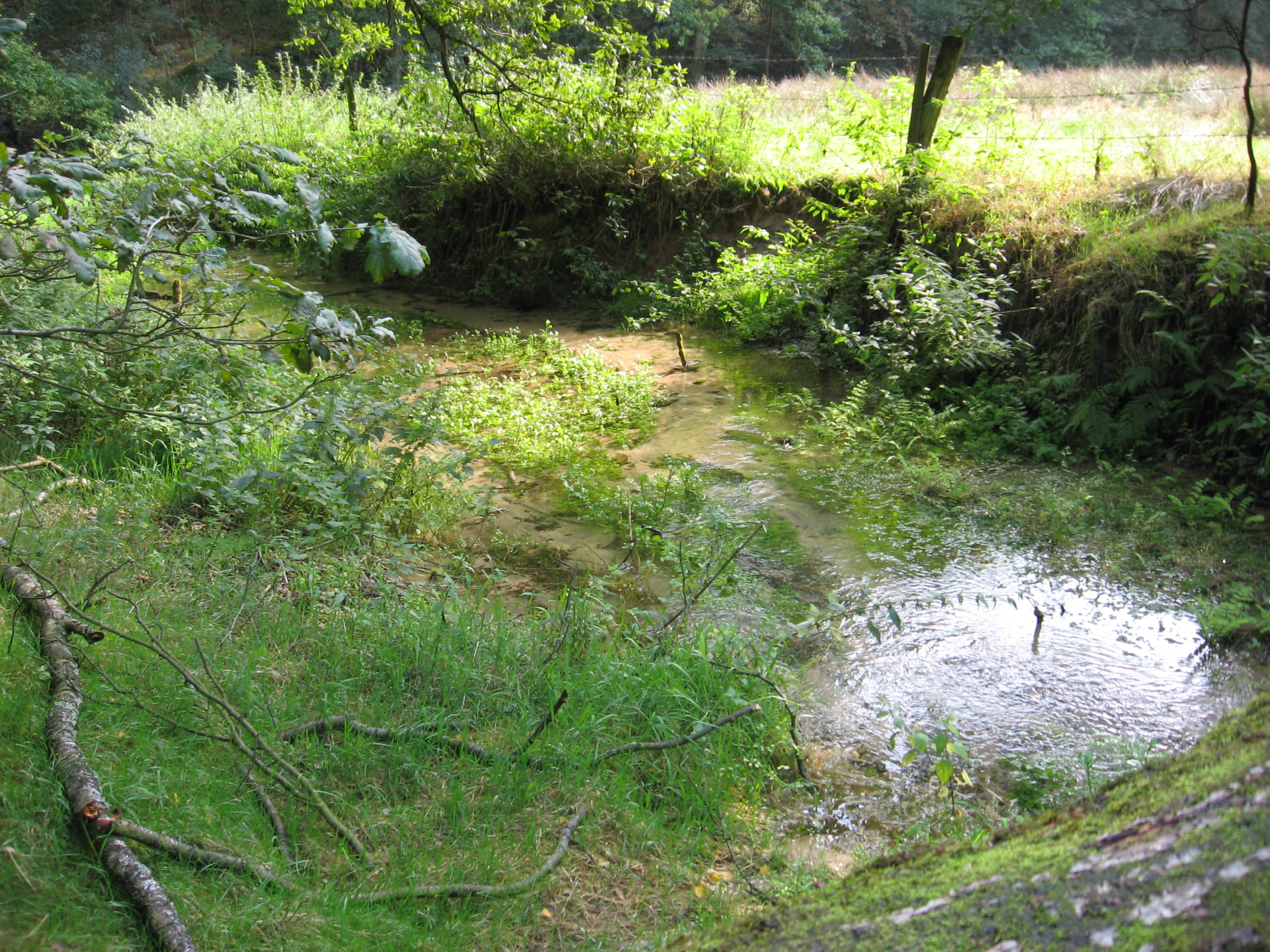|
Emsland
Landkreis Emsland () is a district in Lower Saxony, Germany named after the river Ems. It is bounded by (from the north and clockwise) the districts of Leer, Cloppenburg and Osnabrück, the state of North Rhine-Westphalia (district of Steinfurt), the district of Bentheim in Lower Saxony, and the Netherlands (provinces of Drenthe and Groningen). History For a long time the region of the Emsland was extremely sparsely populated, due to the fens on both sides of the river. Small villages were established in medieval times along the river and on the Hümmling. In the 13th century the bishops of Münster gained control over the region; the Emsland remained property of the bishop until 1803, when the clerical states were dissolved. It came under rule of Prussia and Arenberg, but after the Napoleonic Wars the Congress of Vienna decided to hand the territory over to the Kingdom of Hanover. The Duchy of Arenberg continued to exist as a fief of the Hanoverian kings. When Hanover was a ... [...More Info...] [...Related Items...] OR: [Wikipedia] [Google] [Baidu] |
Börgermoor
Emslandlager ("Emsland camps") were a series of 15 moorland labor, punitive and POWs-camps, active from 1933 to 1945 and located in the districts of Emsland and Bentheim, Lower Saxony, Germany. The central administration was set in Papenburg where now a memorial of these camps, the ''Dokumentations- und Informationszentrum (DIZ) Emslandlager'', is located. In Emslandlager VII camp, seven Belgian Freemasons and resistance fighters founded '' Liberté chérie'' in 1943, one of the very few Masonic lodges established within a Nazi concentration camp. Börgermoor concentration camp The first and one of the most important of these camps was the Börgermoor concentration camp, situated near the current municipality of Surwold, in Lower Saxony. In June 1933 the first 1000 German political opponents to be held in protective custody (''Schutzhaft'') arrived at the site of the camp, which they built from scratch, as well as the Esterwegen concentration camp. In 1934 the camp becam ... [...More Info...] [...Related Items...] OR: [Wikipedia] [Google] [Baidu] |
Transrapid
Transrapid is a German-developed high-speed monorail train using magnetic levitation. Planning for the Transrapid system started in 1969 with a test facility for the system in Emsland, Germany completed in 1987. In 1991, technical readiness for application was approved by the Deutsche Bundesbahn in cooperation with renowned universities. The last version, the Transrapid 09, is designed for a cruising speed of and allows acceleration and deceleration of approximately . In 2002, the first commercial implementation was completed – the Shanghai Maglev Train, which connects the city of Shanghai's rapid transit network to Shanghai Pudong International Airport. The Transrapid system has not yet been deployed on a long-distance intercity line. The system is developed and marketed by Transrapid International, a joint venture of Siemens and ThyssenKrupp. In 2011, the Emsland test track closed down when its operating license expired. In early 2012, demolition and recon ... [...More Info...] [...Related Items...] OR: [Wikipedia] [Google] [Baidu] |
Maglev (transport)
Maglev (derived from ''magnetic levitation''), is a system of train transportation that uses two sets of electromagnets: one set to repel and push the train up off the track, and another set to move the elevated train ahead, taking advantage of the lack of friction. Such trains rise approximately off the track. There are both high speed, intercity maglev systems (over ), and low speed, urban maglev systems ( to ) being built and under construction and development. With maglev technology, the train travels along a guideway of electromagnets which control the train's stability and speed. While the propulsion and levitation require no moving parts, the bogies can move in relation to the main body of the vehicle and some technologies require support by retractable wheels at low speeds under . This compares with electric multiple units that may have several dozen parts per bogie. Maglev trains can therefore in some cases be quieter and smoother than conventional trains and have th ... [...More Info...] [...Related Items...] OR: [Wikipedia] [Google] [Baidu] |
Hümmling
The Hümmling (''Homelinghen'', from ''hömil'' = small stone) is a ground moraine landscape, up to , in the Emsland region on the North German Plain in the western part of the German state of Lower Saxony. Location The wooded Hümmling, which is about 28 km long and only a few kilometres wide, is situated in the northern part of the region of Emsland and the district of the same name, and the drainage area of Ems river. It is limited by the Ems valley in the west and the Saterland in the east. It is located around the town of Werlte which is about 22 km northeast of Meppen. Various streams rise in the Hümmling which discharge into the Hase to the south, the Ems to the southeast and the Leda to the north. History There are over 100 more or less well-preserved dolmens of the megalith culture in the Hümmling hills. In times of the Holy Roman Empire, Hümmling region was the northern part of the Prince-Bishopric of Münster, called the '' Niederstift Münster' ... [...More Info...] [...Related Items...] OR: [Wikipedia] [Google] [Baidu] |
Meppen (Germany)
Meppen (; Northern Low Saxon: ''Möppen'') is a town in and the seat of the Emsland district of Lower Saxony, Germany, at the confluence of the Ems, Hase, and Nordradde rivers and the Dortmund–Ems Canal (DEK). The name stems from the word ''Mappe'', meaning "delta". Geography The town lying on the mouth of the Hase into the Ems in the central part of the Emsland between the cities of Lingen and Papenburg. Lying about from the Dutch border, the town has an area of 188.45 km2 and is 15 m above sea level. The population was 34,196 as of 30 June 2005. Quarters of Meppen: Following villages are situated in Meppen: In 1974, 13 independent municipalities in the close vicinity of the town were integrated into Meppen. History Meppen, formerly a fortified town, boasts 12 centuries of history. The first documented mention of Meppen dates from 834, in a deed of donation by Frankish emperor Louis the Pious, transferring a missionary establishment of that name to the abbey of ... [...More Info...] [...Related Items...] OR: [Wikipedia] [Google] [Baidu] |
Papenburg
Papenburg (; East Frisian Low Saxon: ''Papenbörg'') is a city in the district of Emsland, Lower Saxony, Germany, situated at the river Ems. It is known for its large shipyard, the Meyer-Werft, which specializes in building cruise liners. Geography Districts Papenburg is subdivided into 6 urban districts, Papenburg-Untenende, Papenburg-Obenende, Herbrum, Tunxdorf-Nenndorf, Aschendorf and Bokel. History In the ''Chronicle of the Frisians'', written in the 16th century by the East-Frisian council Eggerik Benninga, the Papenburg (at that time a manor) is mentioned for the first time. In 1458, Hayo von Haren, called "von der Papenburch", confessed to be leaned with the Papenburg. The contract that was made because of this is the earliest verifiably documented mention of Papenburg. On 2 December 1630, the district administrator Dietrich von Velen purchased the manor for 1500 Reichsthaler from Friedrich von Schwarzenberg in order to found a settlement in the fen-surrounded region ... [...More Info...] [...Related Items...] OR: [Wikipedia] [Google] [Baidu] |
Ems (river)
The Ems (german: Ems; nl, Eems) is a river in northwestern Germany. It runs through the states of North Rhine-Westphalia and Lower Saxony, and discharges into the Dollart Bay which is part of the Wadden Sea. Its total length is . The state border between the Lower Saxon area of East Friesland (Germany) and the province of Groningen (Netherlands), whose exact course was the subject of a border dispute between Germany and the Netherlands (settled in 2014), runs through the Ems estuary. Course The source of the river is in the southern Teutoburg Forest in North Rhine-Westphalia. In Lower Saxony, the brook becomes a comparatively large river. Here the swampy region of Emsland is named after the river. In Meppen the Ems is joined by its largest tributary, the Hase River. It then flows northwards, close to the Dutch border, into East Frisia. Near Emden, it flows into the Dollart bay (a national park) and then continues as a tidal river towards the Dutch city of Delfzijl. Betwee ... [...More Info...] [...Related Items...] OR: [Wikipedia] [Google] [Baidu] |
Surwold
Surwold is a municipality in the Emsland district, in Lower Saxony, Germany Germany,, officially the Federal Republic of Germany, is a country in Central Europe. It is the second most populous country in Europe after Russia, and the most populous member state of the European Union. Germany is situated betwe .... References Emsland {{Emsland-geo-stub ... [...More Info...] [...Related Items...] OR: [Wikipedia] [Google] [Baidu] |
Lower Saxony, Germany
Lower Saxony (german: Niedersachsen ; nds, Neddersassen; stq, Läichsaksen) is a German state (') in northwestern Germany. It is the second-largest state by land area, with , and fourth-largest in population (8 million in 2021) among the 16 ' federated as the Federal Republic of Germany. In rural areas, Northern Low Saxon and Saterland Frisian are still spoken, albeit in declining numbers. Lower Saxony borders on (from north and clockwise) the North Sea, the states of Schleswig-Holstein, Hamburg, , Brandenburg, Saxony-Anhalt, Thuringia, Hesse and North Rhine-Westphalia, and the Netherlands. Furthermore, the state of Bremen forms two enclaves within Lower Saxony, one being the city of Bremen, the other its seaport, Bremerhaven (which is a semi-enclave, as it has a coastline). Lower Saxony thus borders more neighbours than any other single '. The state's largest cities are state capital Hanover, Braunschweig (Brunswick), Lüneburg, Osnabrück, Oldenburg, Hildesheim, Salzgi ... [...More Info...] [...Related Items...] OR: [Wikipedia] [Google] [Baidu] |
Peat Bog Soldiers
"Peat Bog Soldiers" () is one of Europe's best-known protest songs. It exists in countless European languages and became a Republican anthem during the Spanish Civil War. It was a symbol of resistance during the Second World War and is popular with the Peace movement today. It was written, composed and first performed in a Nazi concentration camp by prisoners. Background This song was written by prisoners in Nazi moorland labour camps in Lower Saxony, Germany. The '' Emslandlager'' (" Emsland camps") – as they were known – were for political opponents of the Third Reich, located outside of Börgermoor, now part of the commune Surwold, not far from Papenburg. A memorial of these camps, the ''Dokumentations- und Informationszentrum (DIZ) Emslandlager'', is located at Papenburg. In 1933, one camp, Börgermoor, held about 1,000 Socialist and Communist internees. They were banned from singing existing political songs so they wrote and composed their own. The words were written ... [...More Info...] [...Related Items...] OR: [Wikipedia] [Google] [Baidu] |
Leer (district)
Leer is a district (''Landkreis'') in Lower Saxony, Germany. It is bounded by (from the northwest and clockwise) the city of Emden, the districts of Aurich, Wittmund, Friesland, Ammerland, Cloppenburg and Emsland, and by the Netherlands ( Province of Groningen). History In 1744, East Frisia was annexed by Prussia. In 1867, the region was subdivided into districts, and the districts of Leer and Weener were established. In 1932, these two districts were merged. Geography The District is located in the southern part of East Frisia. The Ems River runs through the District, coming out of the Emsland in the south and flowing into the Dollart, a bay of the North Sea. The island of Borkum, belonging to the East Frisian Islands, is also a part of the District. Some of the area of the District is in the Lower Saxony Wadden Sea National Park. Coat-of-arms The coat-of-arms is identical to the arms of the East Frisian chieftain dynasty Ukena, rulers of the area during the 15th centu ... [...More Info...] [...Related Items...] OR: [Wikipedia] [Google] [Baidu] |
Cloppenburg (district)
Cloppenburg is a district in Lower Saxony, Germany. It is bounded by (from the north and clockwise) the districts of Ammerland, Oldenburg, Vechta, Osnabrück, Emsland and Leer. Like the neighbouring Vechta district, it is well known for factory farming, especially of turkeys and pigs. These two districts are also known as the ''Schweinegürtel'' (“pig belt”). The ground is mostly of poor quality. The mass import of animal food made factory farming possible. With the help of liquid manure, corn is grown, which is also used for a growing production of biogas.Wilking, Johannes und Manfred Kayser: Biogaserzeugung im Oldenburger Münsterland - Entwicklungen und Perspektiven. In: Jahrbuch für das Oldenburger Münsterland 2011. Vechta 2010, S. 196-219 History The region was part of the County of Tecklenburg in medieval times. It was then for a long time (1400-1803) property of the Prince-Bishopric of Münster. In 1803 it was annexed by Oldenburg and remained a part of Oldenburg ... [...More Info...] [...Related Items...] OR: [Wikipedia] [Google] [Baidu] |







